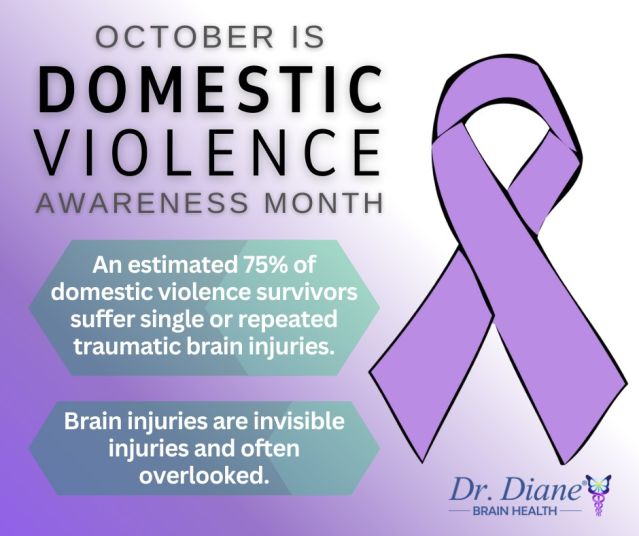
Source: Photo by Mart Production on Pexels
Domestic abuse is a devastating problem that affects countless individuals and families worldwide. According to the Centers for Disease Control and Prevention, CDC, in the United States alone, an estimated one in three women and one in four men will experience some form of intimate partner violence in their lifetimes. This statistic encompasses various forms of intimate partner violence, which include not only physical violence but also emotional, psychological, or other types of abuse.
While the physical and emotional scars of abuse are evident, there is a hidden consequence that often goes unnoticed: traumatic brain injury, TBI. The connection between TBI and domestic abuse shines a light on the additional challenges survivors face and underscores the urgency of addressing this issue. In recognition of Domestic Violence Awareness Month this October, I wanted to share information on the link between traumatic brain injuries and domestic abuse, the specific challenges that survivors face, and the measures we can take to help them recover and prevent domestic violence in the future. It is crucial to bring attention to this problem and take action to support those affected.
The Unseen Consequence
Traumatic brain injuries, or TBIs, result from a blow, jolt, or penetrating injury to the head. In the context of domestic abuse, these injuries can occur when abusers intentionally target the head, face, or neck area. This causes physical harm and conceals signs of abuse, making it a hidden consequence of an alarming problem.
The Statistics
It’s important to clarify that the CDC’s statistic pertains to intimate partner violence as a whole, which includes various forms of abuse. The statistic reveals the extent of the issue and its impact on survivors. However, within this broader context, the connection between TBIs and domestic abuse remains a significant concern.
The Gender Disparity
Women are disproportionately affected by TBIs resulting from domestic abuse. They make up the majority of survivors who experience these traumatic head injuries, making this a problem with clear gender implications. Recognizing and addressing this disparity is a crucial step toward a more equitable and supportive future.
The Hidden Struggles
Survivors of domestic abuse who also suffer from TBIs face a unique set of challenges that can significantly impact their lives. These challenges include:
- Cognitive Impairments: TBIs can lead to memory problems, difficulty concentrating, and reduced thinking speed. Survivors may find it challenging to perform everyday tasks and make informed decisions.
- Post-Traumatic Stress Disorder, PTSD: Survivors of domestic abuse often suffer from PTSD. Symptoms of PTSD, such as nightmares, flashbacks, and hyperarousal, can exacerbate the cognitive and emotional challenges associated with TBI.
- Post-Concussion Syndrome: When symptoms of a concussion, a mild traumatic brain injury, mTBI, do not resolve within a week or two, a diagnosis of post-concussion syndrome is applied. This syndrome can interfere with daily life and lead to frustration, fear, and uncertainty.
- Mood Disorders: Anxiety and depression are common consequences of both domestic abuse and TBIs. These emotional struggles can further complicate a survivor’s journey to recovery.
- Physical Symptoms: Headaches, sleep disturbances, and other physical symptoms can become a constant reminder of the trauma experienced, affecting a survivor’s quality of life.
- Long-Term Effects: TBIs can have lasting effects, they can affect a survivor’s ability to make safe choices, hold employment, and maintain healthy relationships. Untreated TBIs can lead to ongoing behavioral, emotional, and cognitive struggles.
Support and Action
The first step towards addressing the link between traumatic brain injuries and domestic abuse is recognizing it. However, taking action is equally important to make a real difference. We can implement the following measures to ensure that survivors receive the necessary support:
- Universal Assessment. Professionals and healthcare providers should assess for domestic violence universally and establish working relationships with domestic violence programs. This can help survivors to get the support they need.
- Trauma-Informed Approach. Assessments for domestic violence must be conducted with compassion and sensitivity because survivors may not readily share their experiences. A trauma-informed approach is crucial to understanding what has happened to them rather than what is wrong with them.
- Prevention. Prevention efforts must be ongoing to break the cycle of domestic abuse and reduce the number of survivors who endure TBIs. Education, awareness, and community support are vital in this regard.
Conclusion
The connection between traumatic brain injury and domestic abuse reveals a hidden consequence of an already devastating problem. Survivors of domestic abuse who suffer from TBIs face complex challenges that require specialized care and support. By recognizing this connection and taking action, we can help survivors on their path to recovery and ultimately work towards preventing domestic abuse altogether. It’s time to shed light on this issue, support survivors, and create a future free from domestic violence and its hidden consequences. Together, we can make a difference.

Source: Dr. Diane Brain Health

















+ There are no comments
Add yours